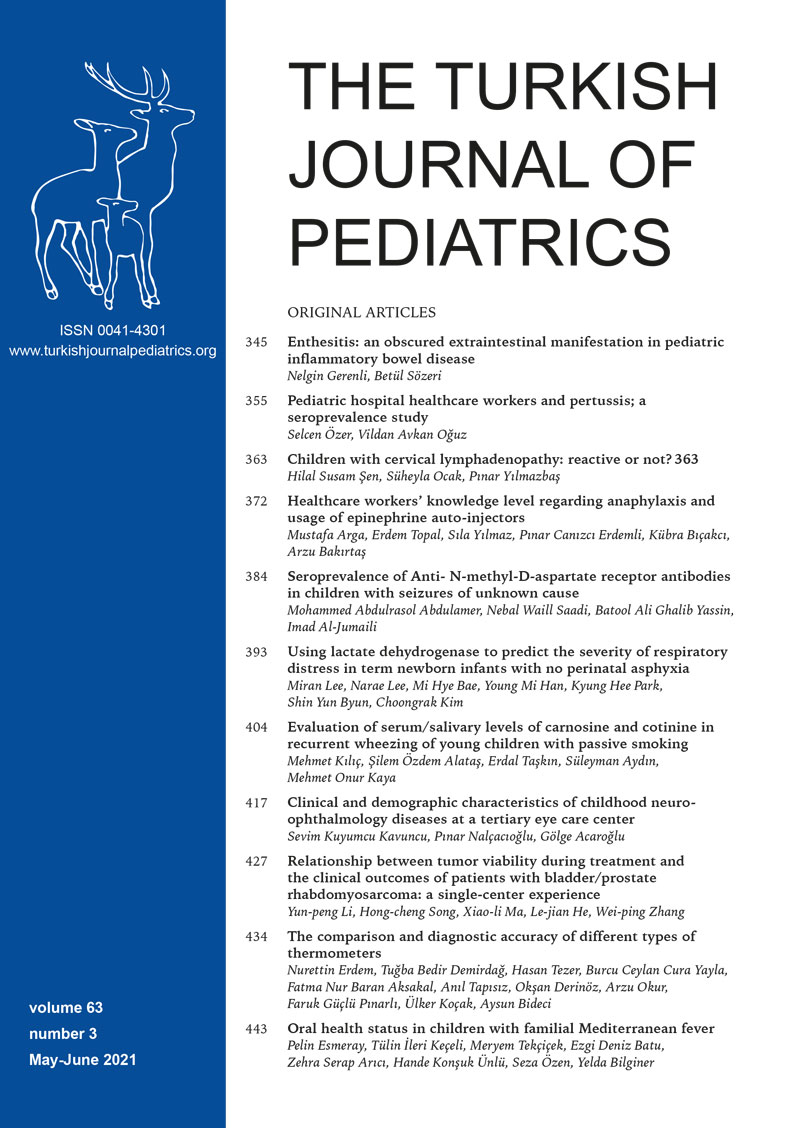Abstract
Background. This study aimed to assess pertussis seroprevalence among healthcare workers (HCWs) of a university children`s hospital and to determine their opinions on whether to get the pertussis vaccine booster dose in adulthood.
Methods. This cross-sectional study was carried out between January 2018 and March 2019. Data recording forms were filled by the face to face interview method. Anti-pertussis toxin IgG (Anti-PT IgG) antibody levels were determined quantitatively from the serum samples using a commercial enzyme-linked immunosorbent assay (ELISA) kit. Anti-PT IgG results were interpreted according to World Health Organization (WHO) recommendations.
Results. Of the 169 HCWs included in the study, 67 (39.6%) were seronegative and susceptible to pertussis. Seropositivity was significantly higher among HCWs who worked 40-80 hours per week. Thirty-six (21.3%) HCWs had high anti-PT IgG levels, indicating recent infection in the past few years. High-level positivity was significantly more common among HCWs using macrolide antibiotics due to prolonged cough. Anti-PT IgG levels of three (1.8%) were compatible with acute infection and they were not followed up with suspicion of whooping cough and were not isolated. While 125 (74.0%) of the participants said they could get the pertussis vaccine booster dose, only three (1.8%) had done so.
Conclusions. The fact that 39.6% of HCWs were seronegative, emphasized the need for the pertussis booster dose. More than 20% of HCWs have had the acute infection without pertussis diagnosis in the past few years. Adult vaccination awareness in HCWs has not yet created a change in behavior. The high rate of seropositivity in macrolide users also shows that we cannot prevent its spread despite treatment. These findings highlight the fact that pertussis can occur in adult age groups and that eradication cannot be achieved without effective adult immunization and surveillance.
Keywords: attitudes, healthcare workers, pertussis vaccine, seroprevalence, whooping cough
Copyright and license
Copyright © 2021 The Author(s). This is an open access article distributed under the Creative Commons Attribution License (CC BY), which permits unrestricted use, distribution, and reproduction in any medium or format, provided the original work is properly cited.














